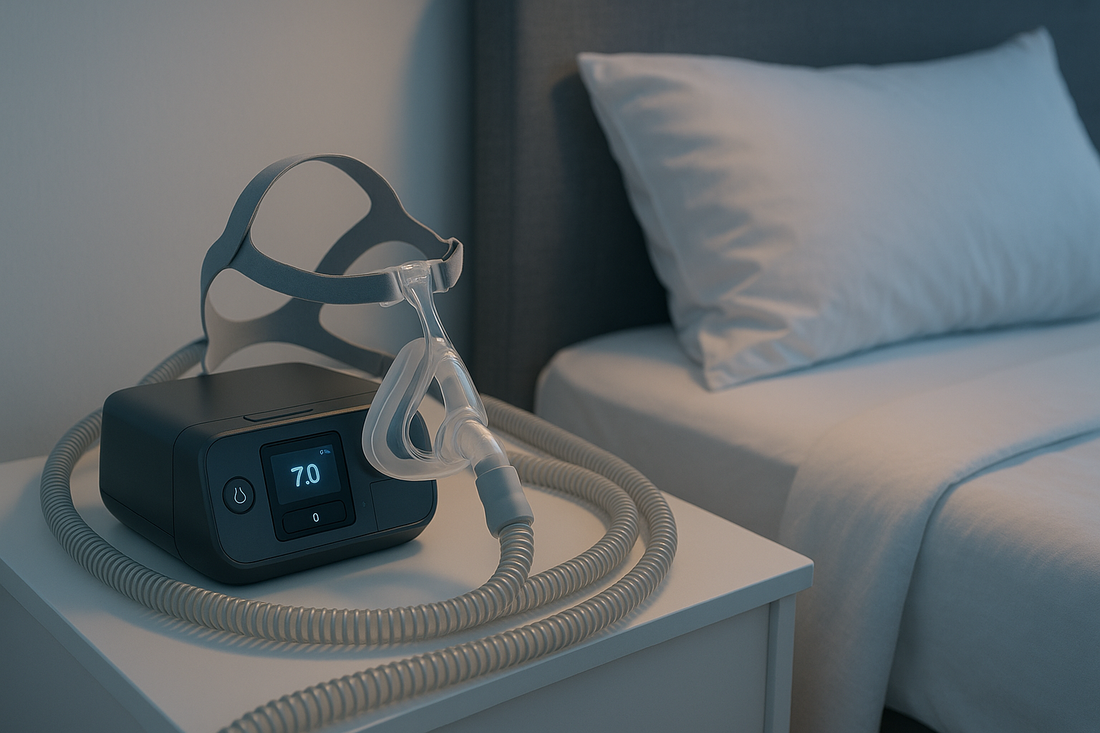CPAP and Dry Eyes: How to Stop Air Leaks from Causing Nighttime Irritation
Waking with dry, irritated eyes while using CPAP? Learn how to spot and fix mask leaks, seal your eyelids for protection, and wake up comfortable and hydrated.

CPAP and Dry Eyes: How to Stop Air Leaks from Causing Nighttime Irritation
If you're waking up with dry, gritty, or irritated eyes and you use CPAP for sleep apnea, the culprit may be hidden air leaks directed toward your eyes. These invisible drafts can rob your eyes of moisture all night, exacerbating dryness, inflammation, and overall discomfort. In this blog, we’ll explain how CPAP leaks worsen dry eye, pinpoint where leaks often occur, and walk you through both self-adjustment steps and nightly protection techniques to keep your eyes comfortable — starting tonight.
Quick Navigation
1. Why CPAP Air Leaks Cause Dry Eyes
Continuous Positive Airway Pressure (CPAP) devices keep your airway open by delivering pressurized air, but sometimes small leaks develop near the mask interface. If airflow is directed toward your face, especially near your eyes, it accelerates tear evaporation and disrupts the tear film — even if your eyelids are fully closed. This effect is magnified overnight when natural tear production drops by up to 70%. Even a subtle draft can dry the ocular surface over several hours, leading to symptoms like redness, gritty sensations, eyelid irritation, and worsened dry eye disease.
Within your sleep session, leaks can also cause microfluctuations in humidity and pressure levels, stressing the ocular surface repeatedly. Over time, these repeated micro-insults can lead to chronic inflammation, making your eyes more sensitive even on non-CPAP nights.
2. Common Places CPAP Masks Leak Toward Eyes
Understanding where leaks tend to develop is the first step in fixing them:
- Mask cushion edges: Slight gaps between mask and skin (especially near the top) can spray air upward.
- Forehead pads: Loose or misaligned pads can divert air toward the eyes.
- Strap looseness or slipping: Nighttime movement can shift mask position just enough to create leaks.
- Mask seal breakdown: Over time cushion materials degrade and lose the ability to conform fully to your face shape.
- Pressure changes and mouth leaks: If your mouth opens, the mask may vent toward your cheeks/eyes to maintain airflow balance.
If most of your leaks seem to occur near the bridge of your nose or between the mask and eyelids, it’s a strong hint that nighttime dryness issues are coming from CPAP airflow infiltration.
3. Adjust & Test Your CPAP Mask to Minimize Leaks
Here’s a step-by-step routine you can perform nightly to reduce leaks: 1. Clean mask surfaces: Oil or residue reduces seal effectiveness. Use mild, fragrance-free soap and let the mask dry. 2. Align the mask carefully: Center it first, then secure forehead pad (if present) before tightening straps. 3. Tighten in small increments: Alternate adjustments side to side to keep symmetry. Avoid overtightening — you want a seal, not pressure marks. 4. Perform a leak test: Exhale sharply or simulate a cough; listen for hissing near eyes. Inspect in a mirror or dim light. 5. Use mask liner or foam inserts: Silicone or cloth liners help fill microgaps. 6. Check cushion age: Replace cushions or masks as recommended (often every 3–6 months) because seals degrade with use. Also consider switching mask styles if leaks persist — nasal pillows, hybrid masks, or full-face fit models may reduce eye-directed leaks depending on your facial topology.
4. How to Seal and Protect Your Eyelids Overnight
Even with an optimally adjusted mask, a minute amount of airflow might seep through. That’s where eyelid sealing becomes a valuable safeguard: - Use a gentle, breathable adhesive across the eyelids (like EyeOasis Sleeping Tape) to maintain lid contact and reduce evaporative loss. - Make sure tape is applied in a comfortable, non-tugging stretch — not pulling skin. - Apply the tape after mask setup to avoid interfering with mask seal. - If eyelid skin is sensitive, cleanse gently before applying to reduce residue and maximize adhesion. By pairing leak reduction with eyelid protection, you create a dual barrier that helps keep the ocular surface moist and comfortable all night.
5. Monitoring & Optimizing Leak Reduction Over Weeks
Once you make adjustments, track changes over a few weeks: - Use your CPAP app or machine interface to monitor “Leak Rate” or “Leak Events.” - Keep a simple log: nights with vs. without eye irritation. - Experiment with one variable at a time (e.g., tape vs. liner vs. seal). - If a particular change consistently improves comfort, consider making it permanent. With persistence and monitoring, you’ll start seeing fewer eye symptoms, lower leak measurements, and more restful sleep — usually within 2–4 weeks.
Shop the Solution
If CPAP leaks continue to dry and irritate your eyes despite the adjustments above, adding a gentle eyelid seal can bolster your defenses overnight. EyeOasis Sleeping Tape helps maintain moisture and protect sensitive eyes while you sleep.
Sources
- American Academy of Ophthalmology. *Exposure Keratopathy & Eye Protection in Sleep*.
- Hayirci E, et al. *Ocular Surface Problems in Patients Using Continuous Positive Airway Pressure.* Sleep Medicine, 2012.
- Kadyan A, et al. *Ocular Complications of CPAP Use in Obstructive Sleep Apnea.* Eye, 2010.
- Tsubota K, et al. *Blinking and Ocular Surface Hydration in Screen Use.* Ophthalmology, 1995.
